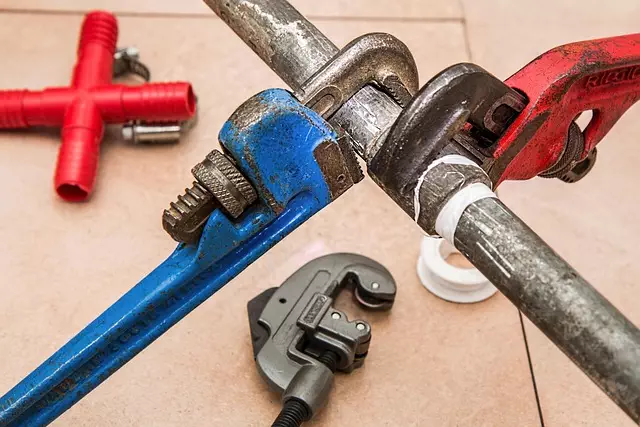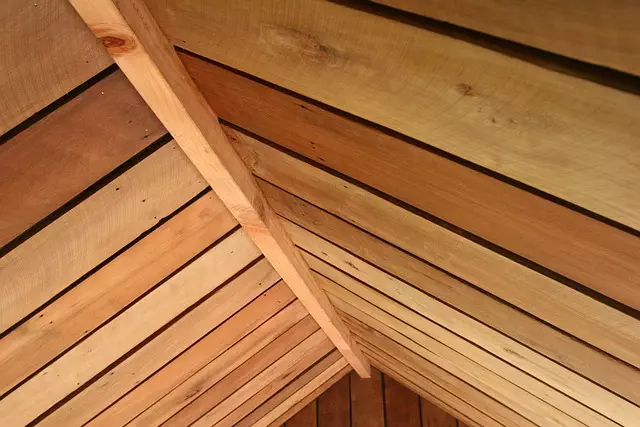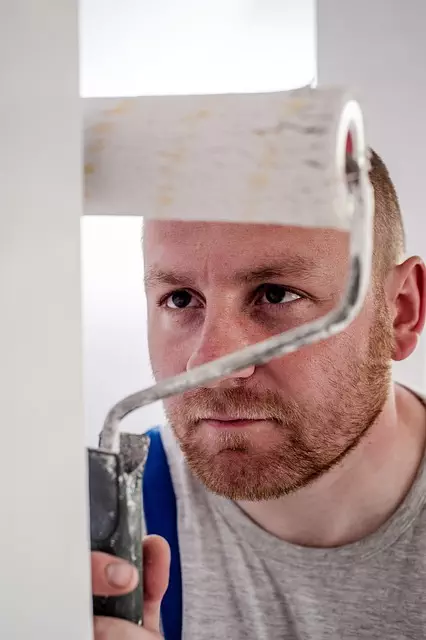Uneven floors in homes often indicate deeper foundation problems that require professional attention. Key causes include soil settlement, poor construction, and natural damage, with foundation cracks exacerbating issues. Early detection through regular inspections is vital for minimizing repair costs and preventing further structural damage. Modern tools like GPR and moisture meters aid in non-invasive early detection. Traditional methods like underpinning and pile driving stabilize foundations, while advanced techniques offer precise solutions. Cost considerations prompt proactive maintenance and inspection to catch issues early. Selecting reputable professionals with specialized skills ensures effective residential foundation repair. Regular maintenance through annual inspections and proper drainage prevents long-term foundation problems.
Uneven floors can be a significant source of concern for homeowners, often indicating deeper foundation problems. This comprehensive guide delves into the intricacies of residential foundation repair, focusing on uneven floor issues. We explore common causes, from soil conditions to structural defects, and highlight early signs that merit attention. Learn about advanced evaluation methods, traditional and modern repair techniques, and cost considerations. Additionally, discover expert tips for long-term maintenance to safeguard your home’s foundation against future challenges, ensuring a stable and secure living environment.
Understanding Residential Foundation Repair: The Basics of Uneven Floors

Uneven floors are a common issue in residential properties, often indicating deeper foundation problems. Understanding the basics of residential foundation repair is crucial for addressing this concern effectively. Foundation repairs involve correcting the structural issues that cause uneven flooring, ensuring the longevity and stability of the home.
The process typically starts with identifying the root cause, which could be soil settlement, poor initial construction, or damage from natural elements like earthquakes or expansive clay. Once determined, repair methods include underpinning, where additional support is installed beneath the floor, or foundation replacement, which involves removing and replacing damaged sections. Regular inspections and prompt action are key to minimizing the severity of foundation problems and preventing further damage to the structure and its interior finishes.
Common Causes of Uneven Floor Surfaces in Homes

Uneven floor surfaces are a common issue in homes, often indicating deeper foundation problems that require attention from professional residential foundation repair services. Several factors contribute to this concern, each demanding unique approaches for correction. One primary cause is settlement issues, where the soil beneath the house compacts or expands due to changes in moisture content, leading to floors that are no longer level. Poorly compacted soil or an uneven underground water table can exacerbate these problems.
Another significant reason for uneven floors is structural damage. Over time, beams and joists may rot or become weakened, especially in areas with high humidity or previous water infiltration. This deterioration can cause the floor structure to settle differently on each side, resulting in noticeable dips or bumps. Foundation cracks, whether from settling or more severe structural issues, can also lead to uneven floors, underscoring the importance of prompt inspection and repair by experts in residential foundation repair.
Identifying Signs of Foundation Problems Early On

Identifying signs of foundation problems early on is crucial for effective residential foundation repair. One of the first indicators to look out for is visible cracks in walls or floors, which can signal structural instability. These cracks may appear as hairline fractures or broader gaps and can occur both vertically and horizontally. Another common sign is uneven flooring, where some areas are higher or lower than others. This unevenness can be noticed when doors do not close properly or when there’s a noticeable difference in the height of baseboards.
Foundation issues can also manifest as sticking or swinging doors, windows that won’t open or close all the way, and bulging or sloping walls. If you notice any of these symptoms, it’s important to contact a professional for an inspection. Early detection allows for more minimal and cost-effective repair solutions, preventing further damage and ensuring the structural integrity of your home.
Non-Invasive Methods for Evaluating Foundation Health

When it comes to assessing foundation health, especially in residential areas, non-invasive methods have gained significant traction as they offer a safer and more cost-effective alternative to traditional excavation. These techniques are particularly valuable for early detection of potential issues, allowing for prompt intervention and preventing minor problems from escalating into costly repairs. One such method is the use of ground-penetrating radar (GPR), which bounces electromagnetic waves off underground structures, creating detailed images of the foundation’s integrity. This technology can identify cracks, voids, or other anomalies without disturbing the surface, making it ideal for regular inspections and monitoring over time.
Another non-invasive approach is the application of moisture meters to measure humidity levels within the soil and foundation walls. High moisture content often indicates potential water intrusion, which can lead to serious foundation problems over time. By regularly checking these readings, homeowners and professionals alike can quickly identify areas of concern and take appropriate measures to address them before they contribute to residential foundation repair needs.
Traditional Techniques for Foundation Repair

When it comes to addressing foundation issues, especially in residential properties, traditional techniques for foundation repair offer a range of solutions. One common approach involves underpinning, where additional support is provided by installing steel beams or concrete columns beneath the existing foundation. This method is particularly effective for structures with settling or shifting foundations caused by soil conditions or improper initial construction.
Another well-established technique is the use of pile driving to reinforce the foundation. By driving metal piles into the ground to a depth that exceeds the active soil layers, engineers can create a stable base for the structure. This method is commonly used in areas prone to seismic activity or high water tables, ensuring the residential foundation repair enhances the building’s overall structural integrity and longevity.
Modern Innovations in Residential Foundation Stabilization

In recent years, modern innovations have transformed the landscape of residential foundation stabilization, offering advanced solutions for uneven floors and related problems. One prominent development is the introduction of underpinning techniques that utilize advanced materials and methods to reinforce existing foundations. These innovative approaches, such as pile driving and structural jacking, provide effective and precise adjustments to unstable structures, ensuring long-term stability.
Additionally, technological advancements have led to more accurate assessments and planning for residential foundation repair. Advanced scanning technologies enable thorough inspections, identifying subtle issues that might otherwise go unnoticed. This data-driven approach allows for customized repair strategies, utilizing modern materials like high-strength concrete and specialized epoxy injections to address specific problem areas. As a result, homeowners can benefit from enhanced structural integrity and improved home stability.
Cost Considerations: Budgeting for Repairs and Prevention

When addressing uneven floors and foundation problems, cost considerations cannot be overlooked. The expense of residential foundation repair varies widely depending on several factors, including the extent of damage, the complexity of the fix, and local labor rates. Small-scale issues like crack repair or mudjacking can be relatively affordable, with prices ranging from a few hundred to a few thousand dollars. However, more significant problems such as underpinning or even full foundation replacement can cost tens of thousands of dollars.
To mitigate these costs, proactive measures are key. Regular inspection and maintenance can help catch potential issues early, reducing the need for extensive repairs. Budgeting for occasional professional assessments and minor fixes along with savings for larger, unforeseen repairs is a prudent step towards ensuring a stable and safe home structure.
Selecting the Right Professionals for Your Home's Foundation

When dealing with uneven floors and foundation problems, selecting the right professionals is paramount for effective and lasting solutions. Look for specialized companies offering residential foundation repair services. Reputable firms will have experienced technicians who can accurately diagnose issues like settlement cracks, heave, or bowing walls, and provide tailored repairs.
Check their credentials, licensing, and insurance to ensure they meet industry standards. Referrals from friends, neighbors, or local hardware stores can also help identify trustworthy contractors. Additionally, online reviews offer insights into their work quality and customer satisfaction. Choosing the right experts ensures your home’s foundation is repaired correctly, preventing further damage and ensuring the safety and stability of your structure.
Long-Term Maintenance Tips to Prevent Future Foundation Issues

Regular maintenance is key to preventing long-term foundation issues in residential properties. One of the most effective strategies is to inspect your home’s foundation at least once a year for any signs of damage, cracks, or shifts. Addressing even the smallest issues promptly can prevent them from escalating into costly repairs. Additionally, ensuring proper drainage around your house is vital; water accumulation near the foundation can lead to serious problems over time.
To maintain a healthy foundation, consider implementing measures like clearing debris and obstructions from drains and gutters, installing waterproof membranes in crawl spaces, and sealing any cracks or openings with appropriate materials. Regularly testing and adjusting the hydrostatic pressure around your home’s basement or crawl space can also help mitigate potential water-related damages, thus reducing the risk of residential foundation repair needs in the future.
